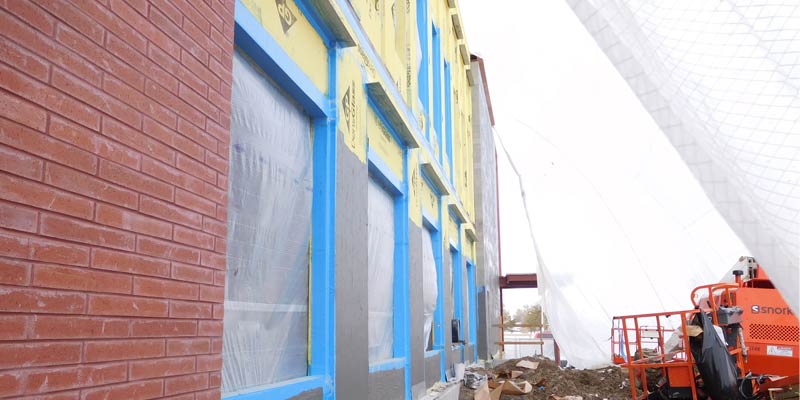You may have heard: Energy consumption in buildings accounts for nearly 40 percent of the total U.S. energy use. Heating and cooling loads represent the largest building-sector energy end-use. This fact alone is a big motivator to me to design building envelopes to place less burden on systems that expend energy.
The exterior enclosure of our buildings involves many components, and mandates that we find smart ways to streamline their efficacy. Appropriate air and moisture barriers, along with the proper amount and location of continuous insulation in external walls, ceilings, floors and roofs, are the base. We continue to see a huge impact made with proper window-to-wall ratios, and highly efficient glazing with appropriate solar heat gain coefficient and light transmittance. How we design the primary thermal barrier between the exterior and the interior of our structures not only affects the heating and cooling loads required but can also play a key role in producing natural light and ventilation as well as set the level of comfort to the building occupants.
By considering regenerative features in the envelope, mechanical and electrical performance can be greatly enhanced. However, these efforts are ineffective if we have an open or short-circuited building skin. Air sealing alone can reduce the need for heating in a building by 20 to 30 percent. Attention to detailing a continuous air barrier must become the focus of detail of all transitions between materials and planes. Clear communication on how to treat transitions below grade, floor to wall transitions, sealing at window openings, soffits, roofs and parapets can be a difficult task, but worth our focus.
We are currently developing a series of 3-dimensional details that can be used to clearly illustrate continuity of the air barrier at the key transitions throughout the building. By providing a tightly sealed envelope, our mechanical and electrical teams can be assured that their systems can run at full efficiency. This also makes it easier for the contractor to understand the intent and goals.
It seems that with every project we find more and more ways to make our buildings not only energy efficient, but also regenerative. It is second nature for our design teams to seek the right combination of extremely efficient HVAC systems, geothermal systems or LED lighting systems to reduce consumption. Now, technology is integrating regenerative features like photovoltaics in shingles, paint and window glass.
Could solar panels on a roof soon be a thing of the past? Not sure. What’s exciting is that every day we are testing and examining new integrated innovations designed to reach the market affordably, and save money/energy in day-to-day operations, with less.
By Greg Beecher, AIA
MHTN Associate, Leader in Building Envelope Implementation

